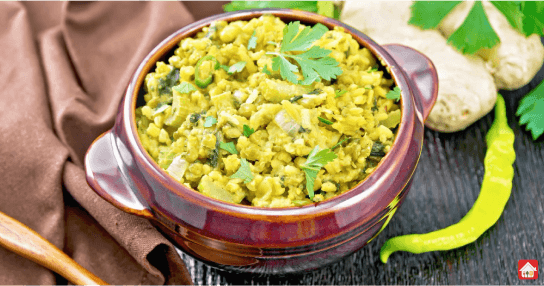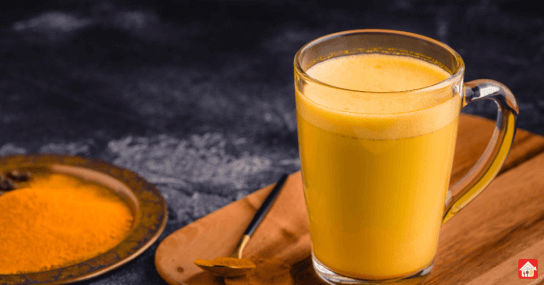Table of Contents
Ayurvedic cuisine is an ancient science practiced in India for centuries. The focus is on using spices to balance mind and body and nourishing the body and soul. This cooking style uses natural ingredients to create nutrient-rich and flavorful dishes. This article will explore the benefits of Indian Ayurveda cuisine and its history. We’ll also discuss how to incorporate it into your daily diet.
Ayurvedic cuisine is a blend of ancient wisdom and modern nutrition science. Ayurveda is an ancient form of holistic medicine developed 5,000 years ago to promote wellness and health through dietary practices. Ayurvedic cuisine is still famous today due to the unique way it encourages healthy eating and provides delicious meals with essential nutrients.
This article provides insight into the uniqueness of Indian Ayurvedic cuisine. We will examine how it can benefit your physical and mental health and spiritual growth. We’ll also show you how to incorporate these principles into your cooking! Learn more about Ayurveda and its fascinating cooking methods.
Food and Ayurvedic Healing
Ayurveda calls food’ Mahabhaisajya’, a term that means “the superior medicine. If you follow a healthy lifestyle and eat according to your needs, and based on the cycles and seasons of nature and the seasons of the year, you can prevent disease and maintain good health for a very long time.
Ayurvedic philosophy says that everything is made up of the same elements. The five details of nature are found in food. Panch Mahabhutaswhich is space, air, fire, water, and earth. Food can balance similar elements within the body when consumed in appropriate proportions.
Diet (ahar) Prakruti

Indian Ayurveda states that the diet (Ahar) should always be selected according to each individual’s Prakruti or Constitution. Foods that are good for the mind and body are called paths. Those that are harmful to health or cause disease are called apathy. Pathya is classified based on whether they have a beneficial or aggravating effect on the Tridoshas (vata, pitta, and kapha) or on how they affect the mind – Sattvic Rajasic Tamasic.
Diet (diet) for Balance Tridoshas

Some foods can be helpful for each dosha, and others can be harmful.
Vata Aggravates Food
With dry fruits, apples, melons, potatoes, tomatoes, eggplant, ice cream, peas, green salads, etc.
Vata Beneficial Food
Sweet fruits: apricots, avocados, and coconuts; brown rice; red cabbage, dates, and grapes.
Pitta Aggravating Food
Spicy foods, peanut butter, and sour fruit such as bananas, papayas, peaches, plums, tomatoes, etc.
Pitta Beneficial Food
Mangoes and oranges are good for you—also, pears and plums. You can eat sprouts or green salads.
Kapha Aggravating Food
Bananas, melons, coconut, dates, papayas, pineapples, figs, plums, dairy products, etc.
Kapha beneficial food
Apples, apricots, pomegranates, Peaches, cranberries, Basmati rice, Sprouts, Chicken, Green gram (Moong), Kidney beans, and Parched rice.
For the Mind
Ayurveda recognizes that food affects both the mind and the body. It recommends certain types of food based on the Guna or individual’s natural behavior. Food is classified into three categories:
Sattvik Food: A vegetarian diet that is non-oily and non-spicy, suitable for the brain.
Rajasik food
Tamasic Food: Too greasy, tasteless, heavy, and stale food can lead to a dull or lethargic mind.
Ayurvedic Recipes for Balance and Wellness
Kitchari

Kitchari is a staple dish in Ayurvedic diets. It is usually a mixture of two grains. Kitchari is easily digestible and cleanses your entire body. This simple one-pot recipe will refresh your digestive system if you need to be more active or overindulge.
Preparation
- Soak the moong daal in water for at least 30 min.
- After washing the rice, put the rice and moong dal in the cooker.
- Add all chopped vegetables and spices
- Add 5 cups of water to the dish and allow it to cook.
- Remove the rice from the heat and add some olive or ghee oil.
- Garnish with fresh chopped cilantro.
Amla Chutney

Amla is a humble fruit that offers excellent health benefits. Both modern and traditional medicine praises this humble fruit. Include the fruit regularly in your diet, and you will see a marked improvement in your health. Amla is a fruit that regulates blood cholesterol and blood sugar. Amla, rich in antioxidants and vitamin C, can benefit your hair, skin, and eyes. Regular consumption will reduce your risk of heart disease, boost your immunity, and treat respiratory problems. It can also help you lose weight by boosting your metabolism.
Preparation
Peel the skin after soaking gooseberries in hot water for 5 minutes. Remove the seed. Add the coriander, green chili, ginger, jeera, and salt. Add all ingredients to a mixer and mix without adding water. Add hing-rai to the oil and heat. Mix and temper the paste.
Turmeric Milk

Turmeric is a powerful spice that has several benefits. It supports liver detoxification, promotes a healthy reaction to allergens and an immune response, aids digestion, helps purify the blood, and promotes the health of the lungs and nervous system. Turmeric is rich in curcumin, which promotes a healthy inflammation response and overall well-being. This turmeric milk recipe has a unique benefit for lung health.
Preparation
Add the spices to water in a small pan and bring it to a rolling boil. Add the milk, and bring it to a boil again while whisking vigorously. Add maple syrup, date powder, or both. Pour the turmeric latte into your favorite mug, and sip it slowly.
Tips on Embracing an Ayurvedic Lifestyle through Food Choices
Eating healthy can be like a symphony, full of flavors and nutrients. It has many health benefits. Ayurvedic food can help you incorporate ancient Indian cuisine into your diet to achieve balance, wellness, and vitality. Here are some Ayurvedic nutritional guidelines:
Focus on whole foods to nourish your body. Prioritize whole foods such as fruits, vegetables, nuts, seeds, grains, legumes, and dairy over refined or processed foods. Use steel-cut oatmeal instead of instant oatmeal with sugar and preservatives. You will be able to get the vitamins and minerals you need for optimal health. Eat organic food whenever possible to reduce exposure to pesticides and harmful chemicals. These can interfere with delicate biological processes in our bodies.
Don’t overeat – pay attention to the portion sizes! Overeating may lead to weight gain and digestive problems such as indigestion or bloating. Ayurveda says one should stop eating when they feel about 70% full. This allows for digestion and doesn’t make you feel overstuffed. Research has shown that mindful chewing improves nutrient absorption and will enable you to enjoy each bite.
Conclusion
Ayurveda has been used to heal our bodies and minds for thousands of years. It is a way to cook with ingredients and spices that are healing and delicious. The unique flavor profiles of Ayurveda can be easily incorporated into any cuisine. As with any form of medicine, it is essential to exercise caution when using Ayurvedic cooking methods or remedies.


